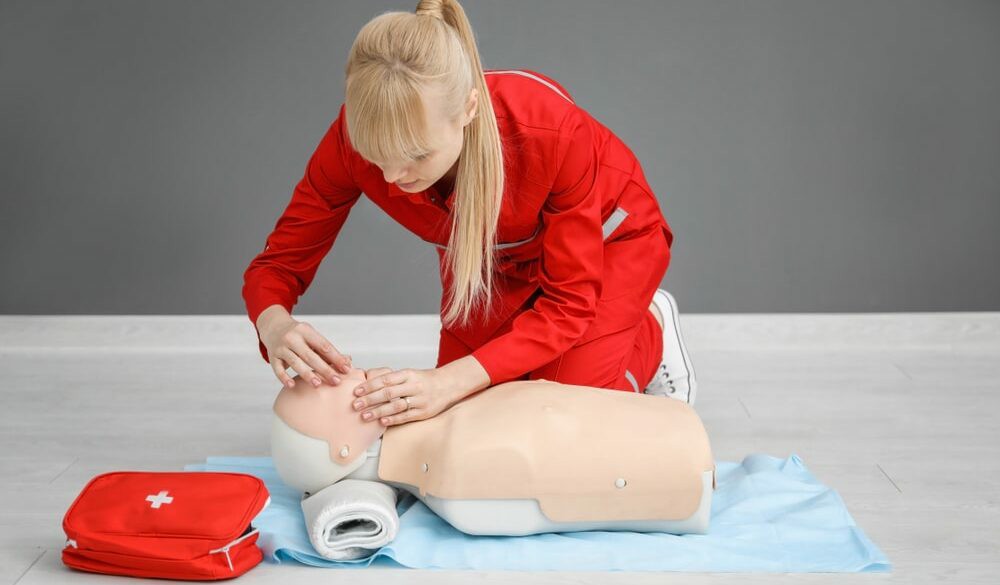Enhance Workplace Safety and Compliance with Essential First Aid & CPR Training
In today’s fast-paced work environments, ensuring employee safety is paramount. Workplace accidents can happen at any moment, but being equipped with the proper knowledge and skills to respond can dramatically alter outcomes. This is where First Aid and CPR training comes in, serving as a critical lifeline in emergencies while also adhering to workplace health and safety regulations.
The Importance of First Aid and CPR Training for Workplace Safety
The links between comprehensive First Aid training, employee preparedness, and overall workplace safety cannot be overstated. Organizations that prioritize First Aid and CPR training create a culture of safety, ensuring employees know how to respond effectively in the event of a medical emergency. Here’s a deeper look at why it matters:
- Increased Confidence: Employees trained in First Aid and CPR feel empowered to act during emergencies, leading to quicker responses that can save lives.
- Reduced Injury Severity: Quick and effective emergency response can minimize the severity of workplace injuries, enhancing employee outcomes.
- Improved Compliance: Meeting workplace First Aid requirements is essential for compliance with health and safety regulations, protecting the organization from potential liabilities.
Key Emergency Response Skills Every Workplace Needs
Employees should be well-versed in various emergency medical response skills. Here are some critical emergency First Aid skills that are indispensable:
- Basic Life Support (BLS): Knowledge of BLS techniques, including CPR, can make a difference in life-threatening situations.
- Controlling Bleeding: Techniques to stop bleeding and stabilize injured individuals until professional help arrives.
- Choking Relief: Proper methods to help a choking person can prevent serious harm.
- Recognizing Medical Emergencies: Understanding signs of conditions like strokes and heart attacks for prompt action.
Understanding CPR Techniques: Life-Saving Knowledge for Employees
CPR (Cardiopulmonary Resuscitation) is one of the most crucial skills among the emergency response training techniques. Here’s what every employee needs to know:
- CPR Rhythm and Techniques: Learning the proper rhythm (30 compressions to 2 breaths) is vital, along with hand placement.
- Adapting CPR for Various Age Groups: Techniques differ for infants, children, and adults. Training should cover all applicable scenarios.
- Using an AED: Familiarizing with Automated External Defibrillators (AEDs) can significantly improve survival rates after cardiac arrest.
First Aid Training and Compliance with Workplace Regulations
Employers are legally obliged to maintain a safe environment, which includes having employees trained in First Aid compliance. Understanding the specific requirements for your workplace can enhance safety and reduce risks:
- Assessing Needs: Base First Aid training requirements on the specific risks associated with your workplace.
- Scheduling Regular Training: Refresh skills and knowledge through regular courses to keep everyone prepared.
- Documenting Training: Keeping records of training and certifications for compliance purposes and before conducting audits.
How First Aid Certification Benefits Employees and Employers
Benefits of obtaining a First Aid certification extend far beyond mere compliance. Both employees and employers can reap numerous rewards:
- Enhanced Employee Morale: Employees feel valued when their safety is prioritized, leading to higher job satisfaction.
- Potential Cost Savings: Reduced incidents of severe injuries lead to lower insurance premiums and fewer medical claims.
- Stronger Team Dynamics: Training fosters collaboration and camaraderie among staff members, contributing to a positive workplace culture.
Emergency Medical Procedures: Immediate Response Steps
Having a clear understanding of emergency medical procedures is crucial to enhance workplace preparedness. Key steps include:
- Assess the Situation: Check for hazards before assisting anyone to ensure your safety first.
- Call for Help: In emergencies, always seek professional medical assistance immediately.
- Provide Care: Administer appropriate first aid based on your training until help arrives.
Selecting the Right First Aid Course: Online Versus In-Person Options
With various training options available, employers must weigh the benefits of online First Aid courses against the hands-on experience of in-person sessions:
- Online Courses: Flexible scheduling, accessibility, and often lower costs make online courses appealing.
- In-Person Training: Provides direct supervision, practical hands-on skills, and immediate feedback, enhancing proficiency and confidence.
Conclusion and Call to Action
Investing in First Aid & CPR training courses is not just about compliance; it’s about fostering a secure and health-conscious workplace that benefits everyone. Empower your team with essential skills that can save lives and enhance workplace morale.
Are you ready to take the next step? Enroll in a certified First Aid & CPR training course today!
For direct inquiries, please contact us at [email protected].



 349,500 Offered Certificates
349,500 Offered Certificates
 24/7 Online Training
24/7 Online Training
 Money Back Guarantee
Money Back Guarantee
 Fully Accredited Courses
Fully Accredited Courses
